$1 billion bond: extensive or expensive?
October 25, 2017
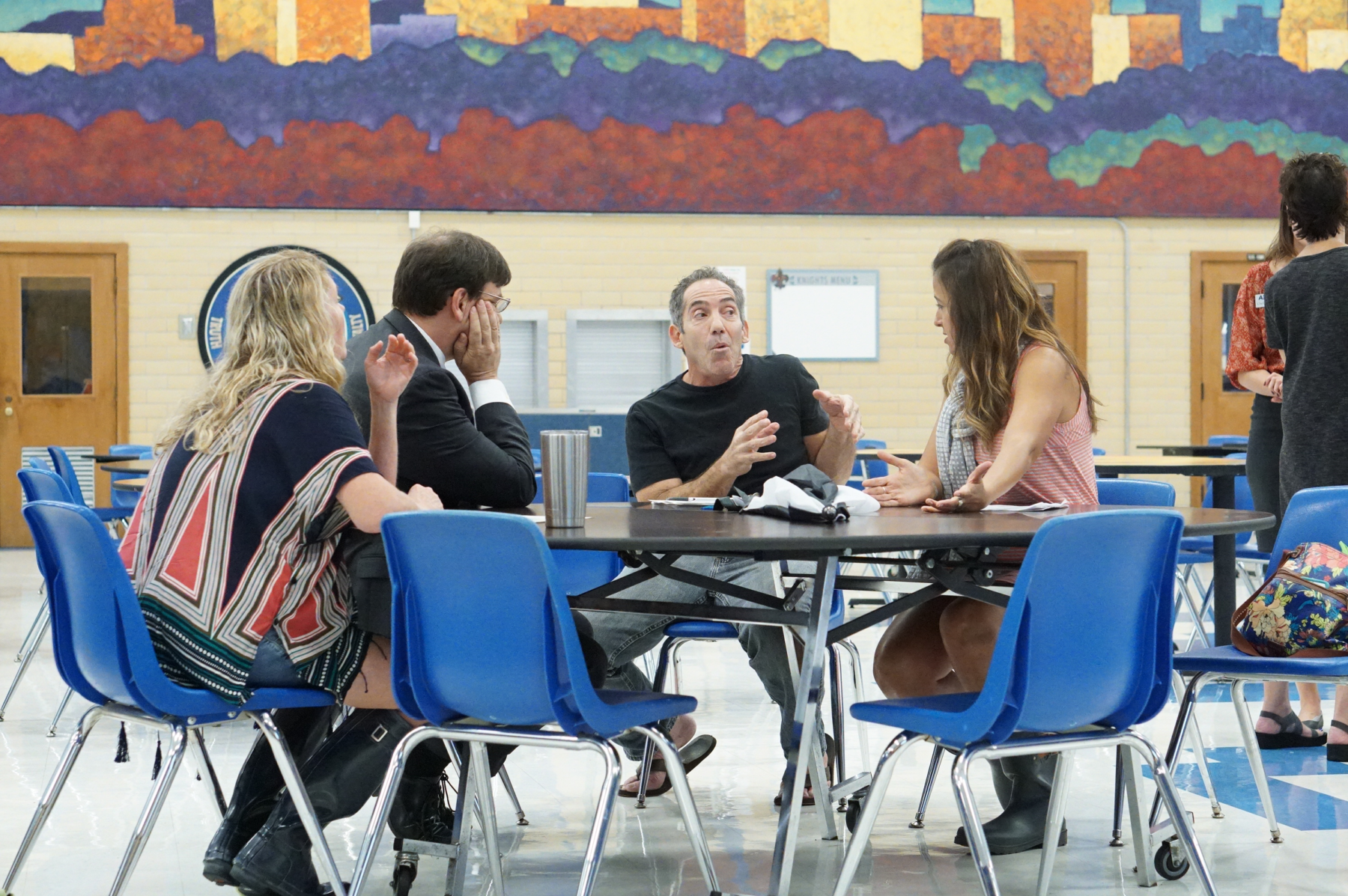
AISD proposes 40 new improvement projects designed to repair, upgrade aging facilities
At McCallum, one can hear frequent complaints of rats, broken ACs and leaking ceilings. As far as AISD schools go, however, McCallum is far from being the most run-down school in the district. The average facility is about 46 years old, with the oldest building nearing a century, and nearly 40 percent of campus buildings have been declared to be in poor or very poor condition.
To address the rapidly aging buildings, the AISD Board of Trustees approved a proposal on June 26 for 40 bond projects, totaling $1.05 billion in order to renovate and modernize buildings, including 16 completely new campus buildings, to meet 21st-century standards for education.
“The way students learn now, the way they function, it’s different than the way they did 30 years ago, and many of our facilities were built more like 50 years ago,” lead engineer and Bowie graduate Matthias Segura said. “We’re trying to get away from Band-Aids; in the past, it was spending money on things that were issues right then and there. We want to look at an approach that is more holistic. Let’s figure out where the best values for the district are, and let’s improve the schools significantly through modernization so it’ll perform better for the students, and it’s less expensive to operate and maintain.”
RENOVATING AND MODERNIZING
Proposals under the bond include four replacement elementary schools, a new middle school in the Mueller neighborhood and a new campus for the Rosedale School, which serves students with special needs throughout the district.
“We’re now taking a completely different strategy,” Superintendent Paul Cruz said in a press conference with AISD student journalists on Sept. 13. “That’s why there are 16 schools that will be brand new or fully modernized, serving students in a facility that really connects with academic programming, or [with] special programs like Rosedale or the Fine Arts Academy. Sure, we could just fix a few mirrors in the Fine Arts Academy, and that’s affordable. But to serve the Fine Arts Academy, let’s just build facilities that are conducive to the learning and expectations.”
The largest portion of the billion dollars is made up of $187 million for critical facility deficiencies, aimed at reducing AISD’s $3 billion deficit in deferred maintenance costs.
“In the past, our strategy has been a lot of patchwork,” Cruz said. “We change the lighting, we change the windows, we do a little painting, restripe parking lots, stuff like that. This is not it. I think that strategy served us at the time, but with the cost of patching it up for so many years compared to the cost of just saying, ‘Level the school and build it brand new,’ [the latter] is actually more cost effective …. and completely fix[es] the issue.”
NO TAX-RATE INCREASE FOR TAXPAYERS
The district hopes citizens will vote for the proposition because it does not come with a tax-rate increase, a feat made possible by relying instead on increased revenue from property taxes because of rising home values, issuing bonds strategically over the 30-year period, leftover funds from previous bonds and money from some upcoming land sales.
Unlike yearly budgets, the money AISD receives from the bond is not subject to Texas’s controversial recapture systems, in which a portion of taxes collected in property-wealthy areas (like Austin) are sent to other, less wealthy school districts in the state. In 2018, Austin is expected to pay a total of $534 million in recapture, more than any other school system in Texas. The trustees say that if they had not had to give up so much money under recapture, then they wouldn’t have needed to issue the bond.
Trustee Julie Cowan says that since AISD is the sixth-largest district in the state and the buildings are far too old to serve their students effectively, a billion-dollar amount is justified.
“We can fund this,” Cowan said. “It won’t add to your tax rate. I would’ve liked to have done more for our schools, … but right now, to try to do just a little more would be a little bit too ambitious because you have to think about what our construction industry [is] like, and you have to think about the time frame; we’ll be displacing kids a bit, moving them out so that we can fix things.”
The district claims that the bond will eliminate emergency structural deficiencies, improve the quality of academic programs (including expanding the Early College High School to schools like LBJ High School) and reduce both over- and underenrollment.
Cruz says that AISD is committed to offering a diverse array of experiences in its schools, saying that they would include revitalized academics, fine arts, foreign languages and athletics in the expanded programming.
“What I hear most from parents—and I am a parent, I have two sons in Austin schools—is, ‘What does this mean for the learning experience of my child?’” Cruz said. “We want all kids to make sure that their program of study is rigorous. We want to make sure all students have a full range of experiences in schools.”
A TWO-YEAR-LONG PLANNING PROCESS
The proposal is based on the recommendations given in the Facility Master Plan, or FMP, an outline of the biggest issues in the district’s facilities and guidelines for how to best correct them. The district trustees approved the FMP on April 4 after seven hours of debate, recommending that $4.6 billion be spent on the proposals over the course of nearly three decades.
The FMP process started about two years ago with the assessment of every facility in the district; each one was given a Facilities Conditions Assessment score, which measured the tangible aspects of the buildings (such as roofing, electrical and plumbing), and an Education Sustainability Assessment score, which considered how well a facility creates an environment that is conducive to learning.
“We know the Austin community expects the school district to be transparent and responsive,” said Christian Clarke Cásarez, the assistant to AISD Chief Financial Officer Nicole Conley-Johnson. “What people should know is that this is a very careful two-year process involving 38 Facilities and Bond Planning Advisory Committee meetings, more than 5,000 individual pieces of input to date and 500 engagement opportunities. The priorities identified in the bond are designed to be prudent, responsible investments to enable 21st-century learning for a new generation of students.”
After the assessment process, the FMP was finalized to address previously reviewed needs, outlining the primary changes that need to be made to AISD’s facilities over the next couple of decades in order to ensure that they are both safe and modernized for their students.
“It’s not light renovation,” Segura said. These numbers, in some cases it’s a complete re-do in a lot of ways. It’s very intense, invasive reconstruction that’s going to occur, where it won’t look or feel anything like it does now.”
For the 2017 bond, they chose the issues outlined in the FMP that required the most immediate attention; as they call it, a “worst-first” approach. Cowan praised the planning in both the FMP and the 2017 bond, advocating for the benefits that the bond will bring to the district.
“Our leadership and board truly do have a vision to reinvent urban education, and providing better academic spaces would help us reach our goals,” Cowan said. “They created a facility master plan unlike any AISD has had before, and I’d probably go so far as to say no other district in Central Texas has anything as comprehensive.”
PROPOSED UPGRADES FOR MCCALLUM
AND FIXING FLUCTUATING ENROLLMENT
Under the plan, McCallum would receive around $8.5 million, primarily focusing on a new dance studio, increasing capacity and improving technological systems in the classrooms.
“We have been lobbying for a new dance facility since the last bond, which didn’t pass,” McCallum dance director Natalie Uehara said. “We will have our own space, and we won’t have to borrow space from athletics or theatre. Also, it’s a safety issue because we need a special floor, which we don’t have in the field house. We do have it [in the black box], only because we built it ourselves, so we need a special strength floor to protect the dancers’ bodies. The program here is so strong, so if we did have our own facility it would just make it even stronger.”
Within their plan, the district has addressed overcrowding and underenrollment by increasing the capacity of existing schools, building new schools and forming a Target Utilization Plan to combat declining enrollment at underenrolled schools. Cowan said that she believes that the upgraded facilities will attract more students, helping to reverse the trend of decreasing enrollment.
THE LASA/LBJ SPLIT
Another major facet of the plan is to move the LASA magnet program out of LBJ High School into what is now Eastside Memorial High School; Eastside would also be moved to the former location of the Alternative Learning Center, which was originally Old Anderson, the district’s African-American high school in the “separate but equal” days of Plessy v. Ferguson. Segura praised the efficiency of this particular solution.
“We have developed a solution that doesn’t require buying new land,” Seguras said. “When you look at things that check multiple boxes, this is one of those really unique solutions.”
Dr. Cruz said that multiple factors formed the basis for the decision to relocate LASA from LBJ’s top floor: the desire for both schools to expand their enrollment, the need for more physical space for the programs at LBJ and the preexisting need for both Eastside Memorial and the Alternate Learning Center to relocate to smaller spaces to accommodate their smaller enrollment numbers.
Critics of the plan argue that the LASA move is part of an ongoing trend of neglecting East Austin schools with a substantial minority population and that the district should be more sensitive to preserving the history of the original Anderson location. Concerned East Austin citizens recently formed the Save East Austin Schools PAC in order to protest the bond. On Sept. 25, around two dozen protesters showed up to AISD’s headquarters to protest the bond proposal. The protesters chanted, “Vote No!” and, “Save East Austin Schools!” The SEAS PAC did not respond to a request for comment.
“This bond disproportionately affects schools in East Austin and continues to racially segregate our children,” said Jane Ibarra, who has grandchildren in AISD schools. “Taxes would increase while not helping our Eastside students. The bond is a quick answer for AISD, but at a cost to our minority students, and they’re our future. And we as concerned parents, grandparents have to see to their best interest, not AISD.”
Cásarez maintains that they are addressing the community’s needs in the process of moving LASA, saying that they will seek out feedback every step of the process until ground is broken in 2020-21. They also explained the district’s plan to celebrate the heritage of the Old Anderson campus, including ensuring historical preservation of the facility and creating a museum and gallery area on the new Eastside Memorial campus to honor the original Anderson community.
“AISD takes very seriously its vision and mission to prepare all students for college, career and life,” Cásarez said. “The facility master plan and bonds are only some tools out of many in an extensive toolbox that Austin ISD will use to confront the challenges of undoing systemic inequities and inequalities throughout our the district. Austin ISD is diligently working on reassessing its magnet program admissions process and reevaluating enrollment criteria in efforts to mitigate barriers to entry and increase diversity. Austin ISD leadership is very mindful to collaborate with other entities that are invested in making it less burdensome for families to live affordably in Austin.”
Currently LBJ is host to the early college program (along with other schools like Travis, Reagan and a few others), where high school students can earn college credit. The district also has plans for a medical science magnet program complete with a clinic, where students can train for the health profession alongside Seton Healthcare professionals. Those who have graduated from the program will graduate with, in addition to their diploma, an associate’s degree in health sciences, workplace experience and a guaranteed interview with the Seton family of hospitals.
“Of course we want you to graduate high school, maybe with a little bit of college credit, but we also want you to go on to have wonderful careers and wonderful lives and wonderful experiences,” Cruz said. “I’m always really proud of teachers. I started off in education as a teacher; it’s always great to see students so engaged in the learning process.”
Created using Visme. An easy-to-use Infographic Maker.
WHAT HAPPENS IF IT DOESN’T PASS?
If the bond does not pass, district officials said they will need to close schools that are chronically underenrolled or low-performing in regards to its facilities. The district would only be able to pay for urgent operating costs with emergency funds, which would quickly be depleted.
A prime example of the dire circumstances of the district’s aging facilities is T.A. Brown; the elementary school was unexpectedly shut down almost a year ago when the building’s foundation was found to have critical deficiencies. Under the bond, the students would have a completely renovated school, but if the proposal doesn’t pass, then students will have to be transferred to other existing schools.
“The school district, under the laws, have very limited ways of raising dollars. … If voters don’t approve the bond, then we’ll have to address emergency repairs because our infrastructure is still old,” Conley-Johnson said. “When you have 130 schools and about another 15 sites, we’ll be forced to deal with critical emergency repairs out of operating dollars, which means it’s going to put programming at risk, our support, all the salaries and supporting our teachers. That’s pretty much all we’re going to be able to do if we don’t get the bond authorized to fix our schools, build new ones and address the overcrowding.”
In the last bond election, which took place in 2013, voters passed $500 million to address critical renovation issues like HVAC systems, plumbing and leaking. In the same election, however, voters also rejected a $234 million proposal for new school construction and campus expansions to relieve overcrowding.
To reach out to voters, AISD has organized a series of community engagement meetings in order to educate the public and receive feedback. On Sept. 26, at one such meeting in the McCallum cafeteria, AISD parent Stacey Roeder said that she left the meeting having learned more about the proposal and had decided that she would vote in favor of it.
“It’s unfortunate that we haven’t been able to maintain our schools better all these years, but it’s important to me that we do what we can now so that we are not in an even more dire situation five, 10 years from now,” said Roeder, who has children at Lamar and Gullett. “These kids deserve facilities where basic needs are met, from plumbing problems to air conditioning. … We have Pre-K students who are using bathrooms with severe over-flooding; that’s just not acceptable. If we don’t do something about these circumstances, they’re just going to get more and more frequent. It’ll just cost even more to fix later. I think they’re doing what they can in the immediate future. Before you form a negative opinion, go find out the facts, and then you can judge.”
Early voting began on Oct. 23, while election day is on Nov. 7. Cowan urges both students of voting age and parents to go vote in support of the bond.
“It’s an exciting time for AISD,” she said. “Now is the time to modernize, open our minds to the possibilities, and promote a purposeful bond initiative.”





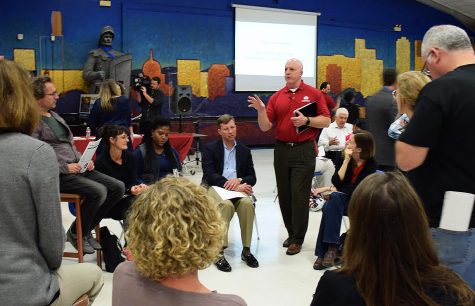

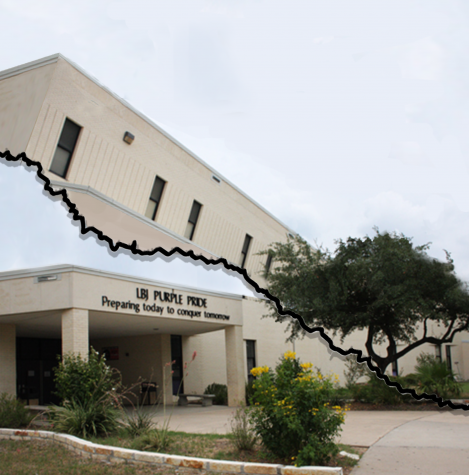


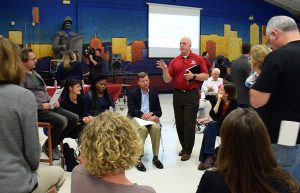

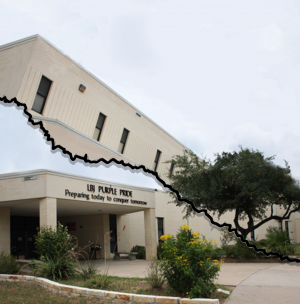

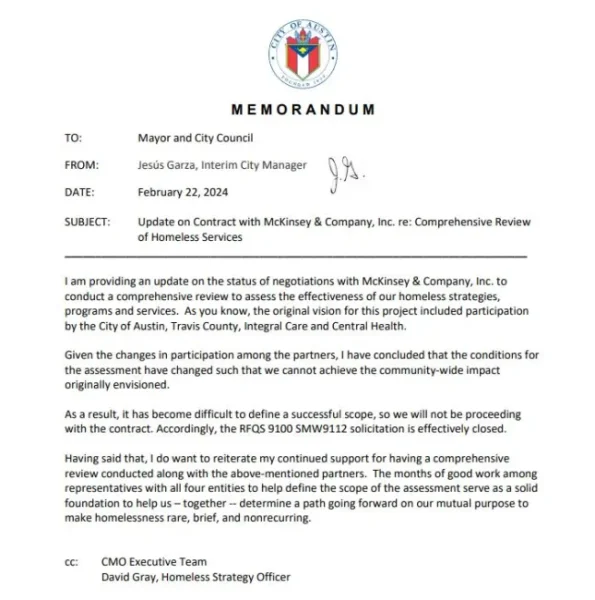
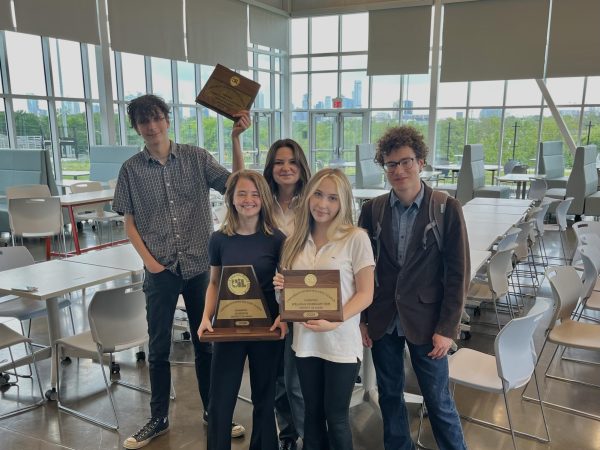


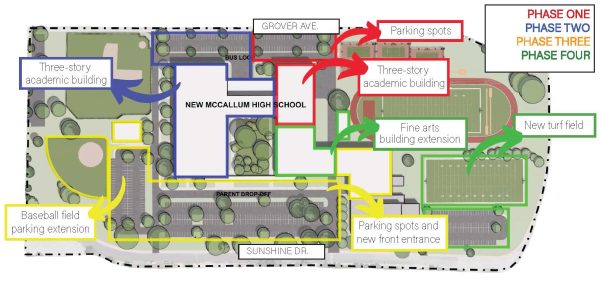

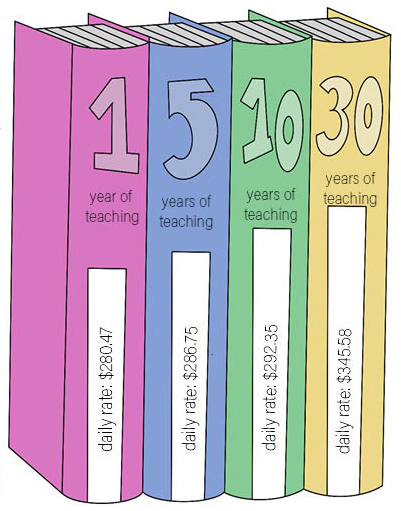
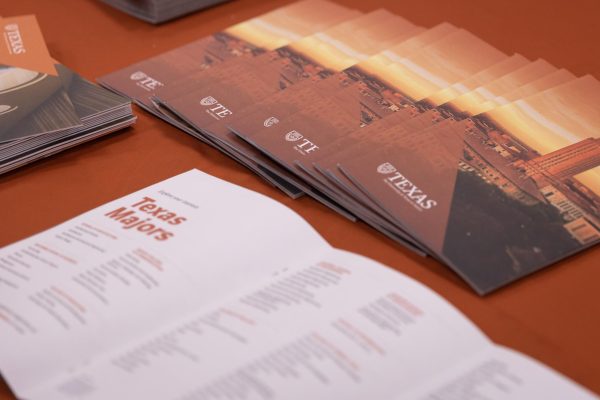
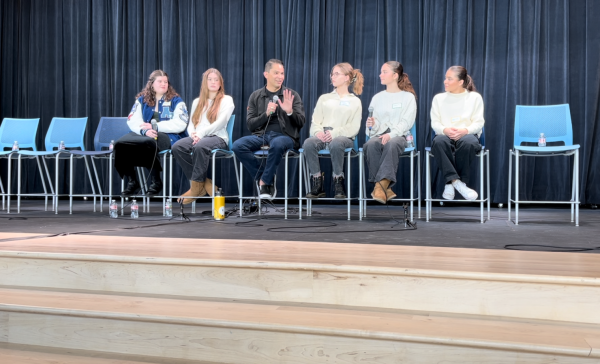
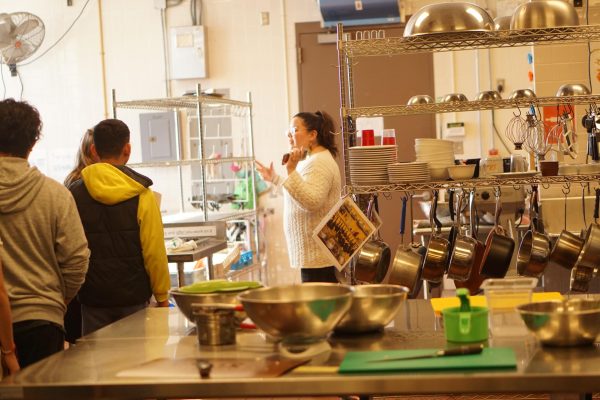

odysseus • Oct 27, 2017 at 7:42 am
Hi,
The graphic displays “$4.6 BILLION: the amount of money AISD has determined that is needed to spent in order to fix all identified defiencies in its facilities” TWICE.
Best,
MB